Slow Cooked Creamy Chicken Pasta
Creamy Chicken Pasta in a Slow Cooker: Step-by-Step Recipe with Cooking Time and Calories

As a chef with years of hands-on experience, few dishes have earned more repeat requests than creamy chicken pasta made in a slow cooker. It’s hearty, cozy, and remarkably easy to master—even if you’ve never cooked before. Over the years, I’ve refined this recipe for everything from weeknight dinners to catered events, and it’s always a hit. What makes it exceptional is the slow infusion of flavor: the chicken becomes fall-apart tender, the pasta absorbs the richness of the broth and cream, and the cheese melts into a sauce so smooth it coats every bite perfectly. This isn’t just a recipe—it’s a technique, and I’m going to walk you through it as if we were in the kitchen together.
- Gather Your Ingredients and Tools
- How to Make Creamy Chicken Pasta in a Slow Cooker: My Proven Process
- Time and Temperature Table
- Nutritional Breakdown
- Making It in the Microwave
- Pressure Cooker / Instant Pot Method
- Stove-Top Version
- Oven-Baked Version
- Mistakes I’ve Made (So You Don’t Have To)
- Add-ins and Toppings I Recommend
- Storage and Reheating Tips from Real-World Use
- Making It Healthier Without Sacrificing Flavor
- Regional and International Variations
- How to Serve It Like a Chef: Plating and Presentation Tips
- The Art of Aroma and Texture: What Makes It Irresistible
- Turning It Into an Elegant Dinner Party Dish
- Frequently Asked Questions (FAQ): 15 Things I’ve Learned Firsthand

Gather Your Ingredients and Tools
Before we get cooking, let’s make sure you have everything ready. Mise en place is the first step to success in any kitchen.
Ingredients:
- 2 boneless, skinless chicken breasts (or thighs for a richer flavor)
- 12 oz (340 g) uncooked penne or rotini pasta
- 1 cup low-sodium chicken broth
- 1.5 cups heavy cream
- 1 tablespoon minced garlic
- 1 teaspoon onion powder
- 1/2 teaspoon smoked paprika
- Salt and freshly ground black pepper to taste
- 1 tablespoon olive oil (for optional searing)
- 1 cup shredded mozzarella cheese
- 1/2 cup grated Parmesan cheese
- Optional: baby spinach, mushrooms, or sun-dried tomatoes for extra color and flavor
Tools:
- 6-quart slow cooker
- Chef’s knife and cutting board
- Measuring cups and spoons
- Wooden spoon or spatula
- Cheese grater

How to Make Creamy Chicken Pasta in a Slow Cooker: My Proven Process
I’ll never forget the first time I rushed this recipe—dumped everything in at once and crossed my fingers. Big mistake. The pasta turned to mush, and the cream curdled. Since then, I’ve perfected the process.
Season your chicken first—generously. I rub in salt, black pepper, and smoked paprika. If I have time, I’ll give the chicken a quick sear for a golden crust that adds depth to the flavor. Then I place it in the slow cooker with minced garlic, onion powder, and broth.
Now, resist the urge to add pasta or cream at this point. Let the chicken cook first on Low for 4.5–5 hours or High for 2.5–3 hours. When it’s done, I remove it briefly, shred it with two forks, and return it to the cooker. Then—and only then—I stir in the pasta, heavy cream, and cheeses. I cover it back up and cook on High for another 30–40 minutes, stirring gently once halfway through.
Time and Temperature Table
| Method | Temperature | Duration | Notes |
| Slow Cooker (Low) | ~190°F / 88°C | 4.5–5 hours | Best for tenderness |
| Slow Cooker (High) | ~300°F / 149°C | 2.5–3 hours | Faster, still effective |
| Pasta + Cream Phase | High | 30–40 minutes | Stir once to avoid sticking |
Nutritional Breakdown
Each generous 1.5-cup serving (out of six total) delivers around 520 calories, with approximately 28g protein, 36g carbohydrates, and 28g fat. I’ve served this dish to clients counting macros and others just chasing flavor, and this version strikes a satisfying balance. For a lighter version, I sometimes swap the cream for evaporated milk, but truth be told, the full-fat version is worth indulging in.

Making It in the Microwave
When I had to whip this up in a hotel kitchenette, I learned it can work in a microwave with a little care. Start by cutting the chicken into small cubes and microwaving them with a tablespoon of broth and garlic in a covered glass bowl for about 6–8 minutes on High.
In a separate bowl, combine cooked chicken, cream, pre-cooked pasta, and shredded cheese. Cover loosely and heat in 5-minute intervals at medium power (50%), stirring in between. The texture won’t be exactly the same as slow-cooked, but it comes surprisingly close for an express version.
Pressure Cooker / Instant Pot Method
I love this method when I’m pressed for time. Set your Instant Pot to “Sauté” and brown the chicken for 3–4 minutes per side. Add garlic, seasonings, and broth. Seal and cook on High Pressure for 10 minutes. Quick release, shred the chicken, and stir in dry pasta, cream, and cheese. Cook on “Sauté” for 10 more minutes, stirring often. The result is rich and fast—perfect for busy evenings.
Stove-Top Version
In my restaurant kitchen, I’ve used this method when all the slow cookers were tied up. Sear the chicken in a deep skillet with olive oil, add the garlic and seasoning, then pour in broth and simmer covered until the chicken is cooked through. Shred it right there, then stir in cream, pasta, and cheese. Simmer uncovered on low heat, stirring frequently until the pasta is tender and the sauce coats the spoon.
Oven-Baked Version
I’ve done this in hotel banquets and potlucks—easy to transport and serve. Use pre-cooked or shredded rotisserie chicken. Mix it in a greased baking dish with uncooked pasta, cream, broth, and seasoning. Cover with foil and bake at 375°F (190°C) for 35–45 minutes. Uncover, top with cheese, and broil for a golden top.

Mistakes I’ve Made (So You Don’t Have To)
Oh, I’ve made them all—trust me. My first version? Pasta added at the start. It disintegrated. Cream added too early? It separated into a greasy mess. I even forgot to stir once halfway through the final stage once, and my pasta clumped into one giant brick.
My advice: never add cream or pasta until the chicken is fully cooked. Always stir once midway through the final cooking stage. And always taste for salt after the cheese melts—cream mutes seasoning more than you’d think.
Sauces and Seasoning Variations
This dish is incredibly versatile. I often switch things up depending on who I’m cooking for. Sometimes I stir in a spoonful of pesto with the cream and top it with toasted pine nuts. Other times, I add Cajun seasoning and sliced andouille sausage for a spicy Southern spin. One of my favorites? A creamy tomato-basil variation with sun-dried tomatoes and a swirl of marinara folded into the cream.
Add-ins and Toppings I Recommend
I love how this dish accepts personality. I’ve added sautéed mushrooms, baby spinach, frozen peas, or roasted red peppers. If I want a smoky touch, I stir in chopped bacon or smoked gouda. For crunch, a few butter-toasted panko breadcrumbs or crushed walnuts on top make it feel like something from a bistro. There’s no wrong turn—just don’t overdo it with too many mix-ins at once.
Storage and Reheating Tips from Real-World Use
After making this dish dozens of times for clients and family, I’ve dialed in the best storage tricks. I always let it cool fully before storing. In the fridge, it keeps 3–4 days easily. For reheating, a splash of cream or broth in the pan or microwave helps loosen the sauce back to its original creamy state.
Freezing? It’s doable, but the sauce can separate slightly. I freeze it in individual silicone molds or bags and reheat gently on the stove, stirring often. It’s better to freeze without pasta and add freshly cooked noodles later for best texture.
Making It Healthier Without Sacrificing Flavor
I’ve reworked this recipe for lighter diets more times than I can count. I’ve used Greek yogurt thinned with broth, or swapped cream for evaporated milk. It’s not the same indulgent feel—but it’s still satisfying. Whole wheat or chickpea pasta also works beautifully. I often bulk it up with zucchini ribbons or steamed broccoli near the end for more fiber and color.
For kids, I tone down the garlic and swap mozzarella for a bit of cheddar. They love the creaminess, and I feel better knowing they’re eating something wholesome and homemade.
Regional and International Variations
In France, I once had a version with crème fraîche, tarragon, and white wine. It was aromatic and incredibly refined. While working in Louisiana, I adapted it with Cajun seasoning, bell peppers, and shrimp—true Southern soul food. And in Northern Europe, I saw a dill-cream version with smoked salmon that felt luxurious and fresh. These twists always begin with the same creamy base and go in any direction your pantry allows.

How to Serve It Like a Chef: Plating and Presentation Tips
Presentation, in my experience, is what turns a home-cooked meal into a restaurant-quality experience. Even comfort food like creamy chicken pasta deserves a thoughtful plate.
When I serve this dish at events or for guests, I never just ladle it haphazardly into a bowl. First, I use shallow white pasta bowls—these help frame the food and let the sauce pool beautifully at the base. I like to give the pasta a gentle twist using tongs or a large spoon, placing it in the center of the plate in a slight mound. This creates height and structure.
Next, I sprinkle a small amount of freshly grated Parmesan—not the pre-shredded kind—across the top, followed by a crack of black pepper. A few ribbons of basil or a single small sprig of fresh thyme add color contrast and aroma. For a final flourish, I sometimes drizzle a drop or two of good-quality olive oil or even truffle oil for a more luxurious edge.
And here’s one of my favorite pro tips: warm the plates before serving. Just a quick minute in a low oven or under hot water and wiped dry. Hot pasta cools quickly on a cold plate, and warming it shows care. It’s a subtle difference, but one that elevates the whole experience.
The Art of Aroma and Texture: What Makes It Irresistible
Most recipes talk about taste, but few discuss why dishes like this are so satisfying on a deeper sensory level. As a chef, I always pay attention to two often-overlooked details: aroma and texture.
Let’s talk aroma first. When you lift the slow cooker lid after five hours, the first thing that hits you is the buttery scent of slow-cooked garlic, the mellow richness of chicken broth, and the tangy edge of Parmesan melting into cream. I’ve had guests comment on the smell before they’ve even seen their plate. Adding herbs like thyme or basil near the end enhances this bouquet without overwhelming it. On cold days, this aroma alone draws people to the kitchen.
Then comes texture—and this is where timing matters. The chicken should shred easily but still retain juicy, defined strands—not mush. The pasta, if added at the right time, is tender but with just enough bite to contrast the creamy sauce. The sauce itself must coat the spoon like velvet—thick, but not clumpy or gluey. Cheese helps with this, but only if melted at the proper moment.
When all of these elements are in harmony—tender meat, perfect pasta, lush sauce, and a scent that fills the room—you have more than just dinner. You have comfort, craftsmanship, and memory on a plate.
Turning It Into an Elegant Dinner Party Dish
Believe it or not, this humble slow cooker recipe can be dressed up for a dinner party—and I’ve done exactly that, more than once.
The trick is in the presentation, pacing, and pairing. First, I portion the pasta into small bowls or ramekins for individual servings. Rather than serving a giant plate of pasta, I plate it in elegant, bistro-sized portions. This lets your guests enjoy the richness without feeling overwhelmed.
I pair it with a light arugula salad with lemon vinaigrette—the peppery greens cut through the creamy richness. A slice of crusty sourdough or garlic focaccia adds texture and makes the meal feel intentional. For drinks, a dry white wine like Sauvignon Blanc or a lightly oaked Chardonnay complements the sauce beautifully.
To elevate it further, I sometimes sauté wild mushrooms and spoon them on top just before serving. Or I finish each bowl with a dollop of herbed ricotta or a swirl of white truffle oil. If I’m feeling especially festive, I’ll serve the pasta in small edible parmesan bowls made from baked cheese—guaranteed to impress.
With a little attention to detail and some plating finesse, this dish transforms from comfort food to celebration centerpiece. It’s proof that great food doesn’t need to be complicated—just made with care.
Frequently Asked Questions (FAQ): 15 Things I’ve Learned Firsthand
Can I use frozen chicken in the slow cooker?
I’ve done it when I forgot to defrost, but it’s not ideal. It takes longer to come to temperature, and the texture’s never quite the same. I recommend thawing first.
What pasta shapes work best?
On my tests, penne and rotini consistently hold their shape and absorb sauce well. Avoid spaghetti—it clumps and breaks apart.
Can I prep this in advance?
Yes, and I often do. Just mix everything (except pasta and cream) into a bag the night before. In the morning, dump it in the cooker and let it go.
How do I thicken a runny sauce?
I recommend stirring in a cornstarch slurry (1 tbsp cornstarch + 1 tbsp cold water) near the end, or just letting it rest uncovered for 5–10 minutes.
Can I substitute the cream?
Yes. On my lighter days, I use evaporated milk or a mix of Greek yogurt and broth. Still tasty—just a little leaner.
How long does it last in the fridge?
I store leftovers up to 4 days. Always reheat gently with a splash of liquid to restore creaminess.
Can I freeze it?
I do, but I prefer freezing the sauce and chicken without pasta. Pasta texture changes after thawing, and it’s better added fresh.
How spicy is it?
The base is mild. I often add red pepper flakes or Cajun spice when cooking for guests who like heat.
Can I double the recipe?
Yes! I’ve doubled it in a 7-quart cooker. Just extend cooking time slightly and stir more frequently near the end.
What cheeses work well?
I always use mozzarella for melt and Parmesan for saltiness. Smoked gouda or cheddar add interesting depth.
Can I add vegetables?
Absolutely. I often add mushrooms, spinach, or even frozen peas in the last 15 minutes. They balance the richness nicely.
What sides go best with this?
Garlic bread, Caesar salad, or steamed greens. Something light and crisp to contrast the creamy pasta.
How do I reheat leftovers?
I recommend stovetop over low heat with a splash of broth or cream. In the microwave, use medium power and stir halfway.
Can I use pre-cooked chicken?
Yes! I do it all the time with rotisserie chicken. Just stir it in with the pasta and cream stage—no need to recook.
Why did my cheese clump or turn oily?
It likely went in too early or cooked too hot. I always stir in cheese last, after turning off the heat or during final 10 minutes on Low.

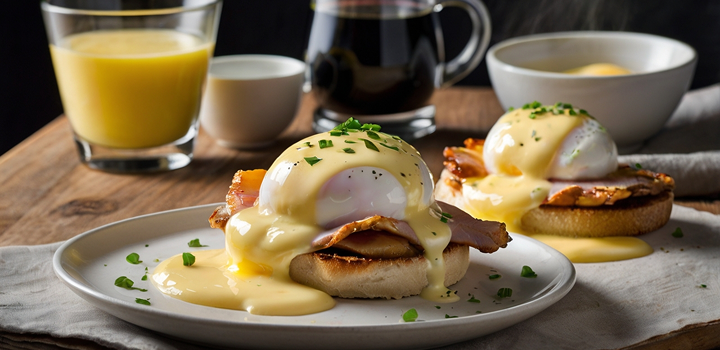
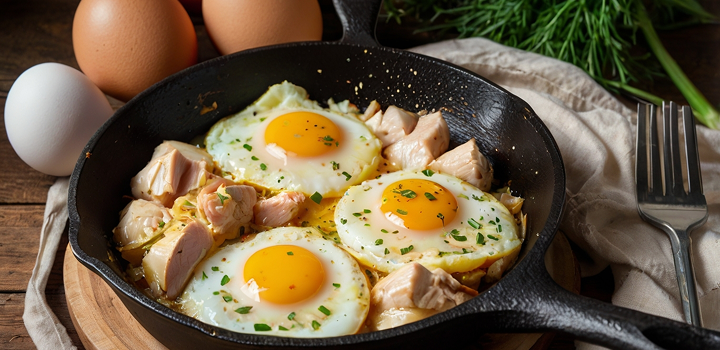
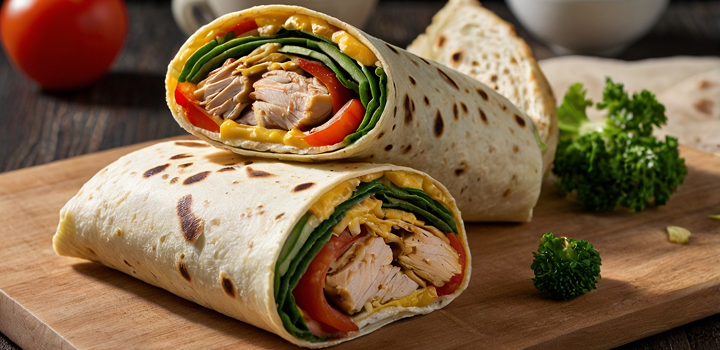
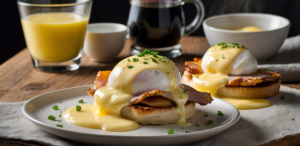
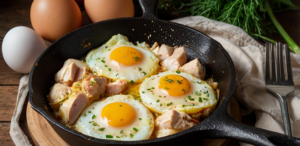

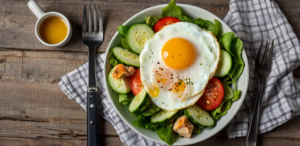
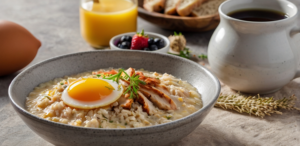
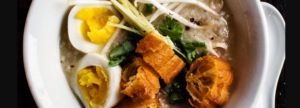

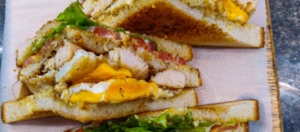
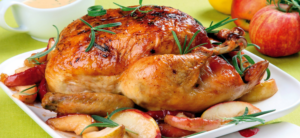

Post Comment